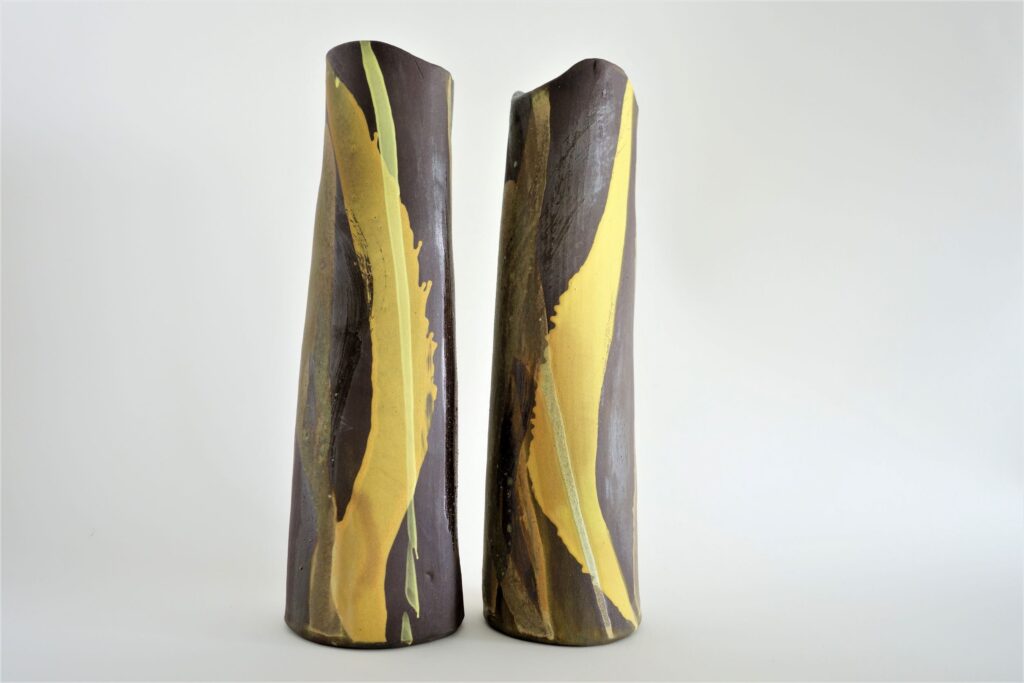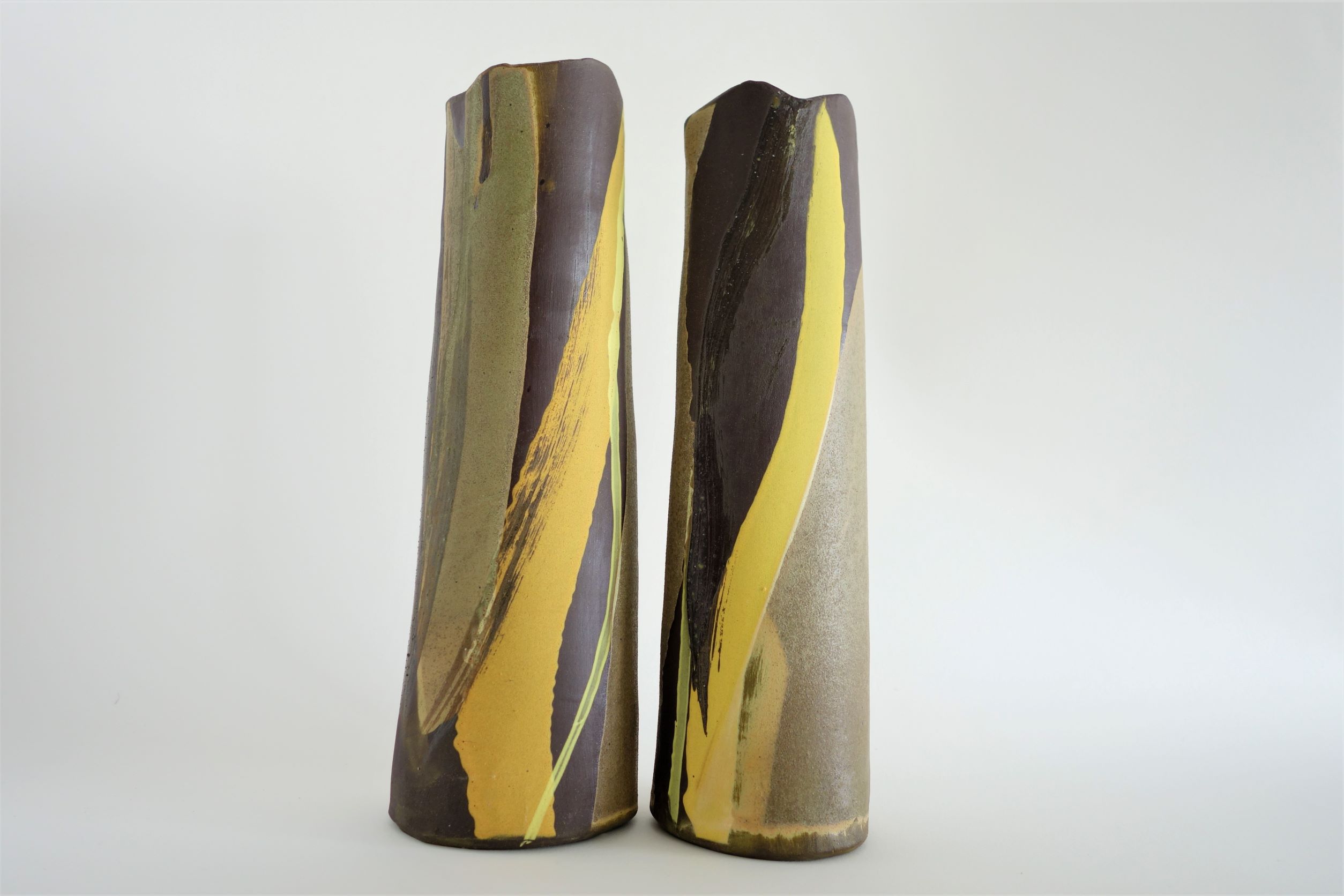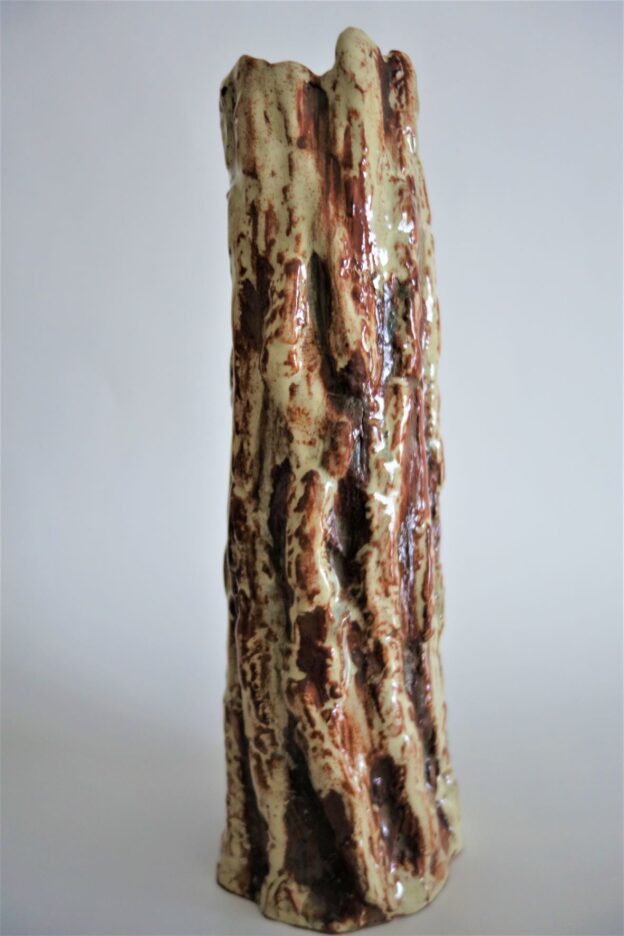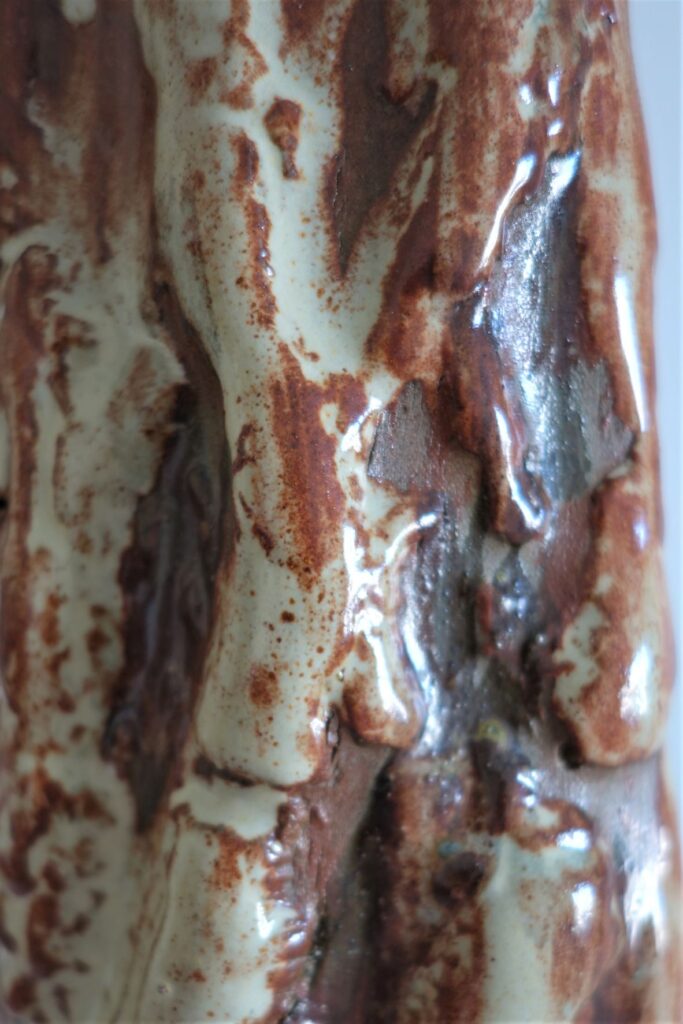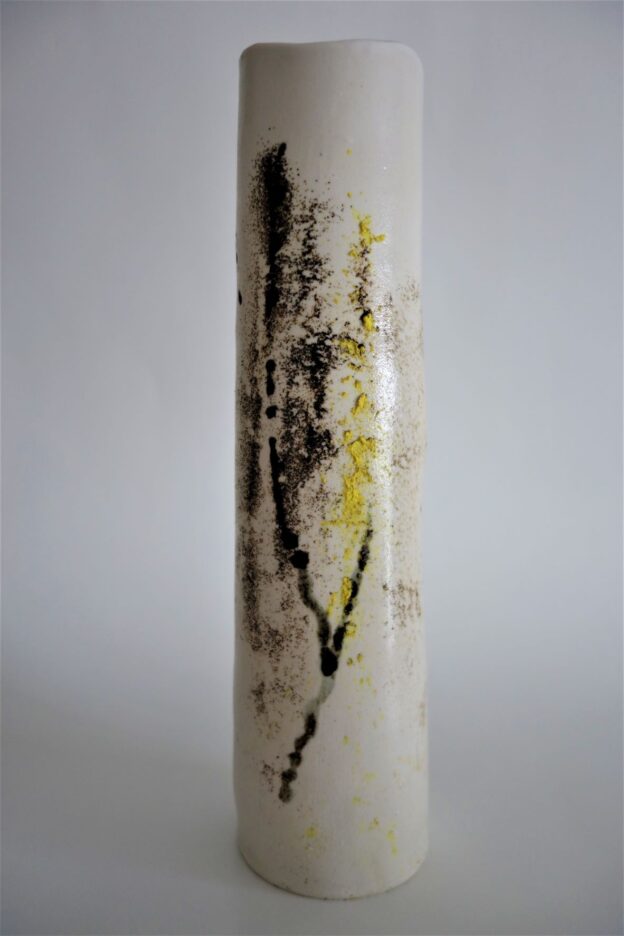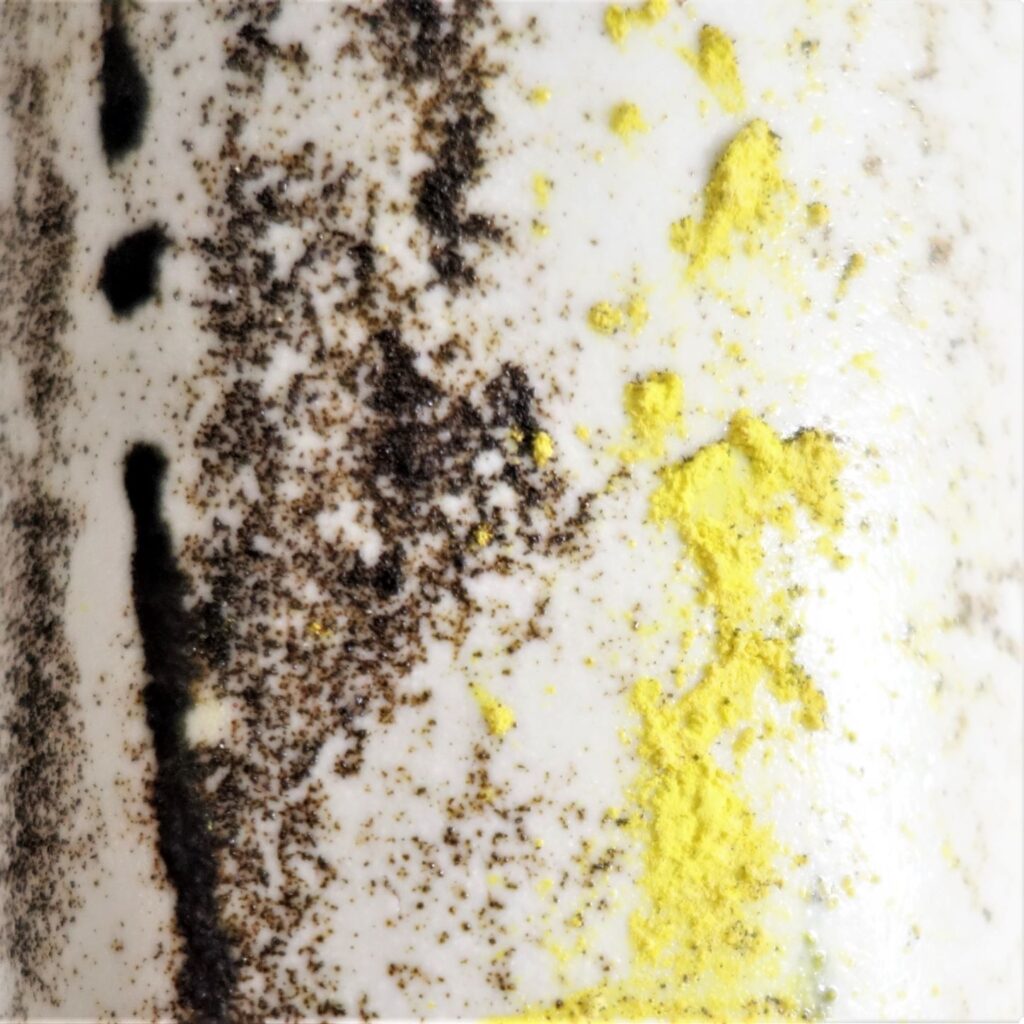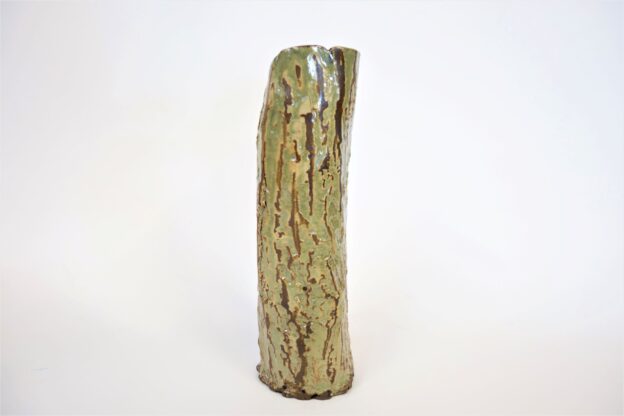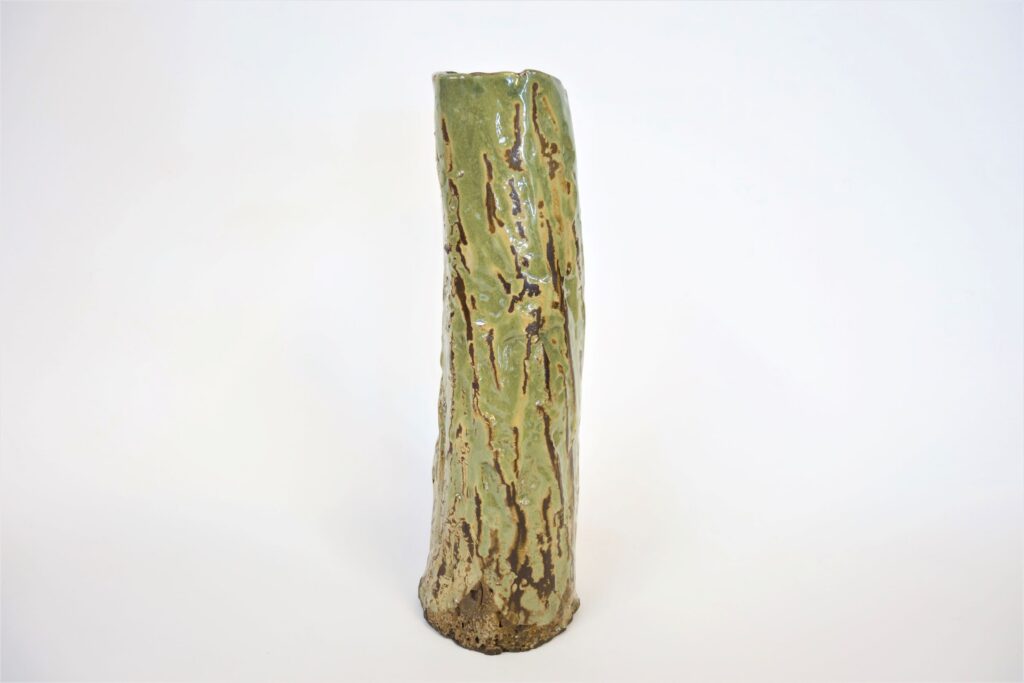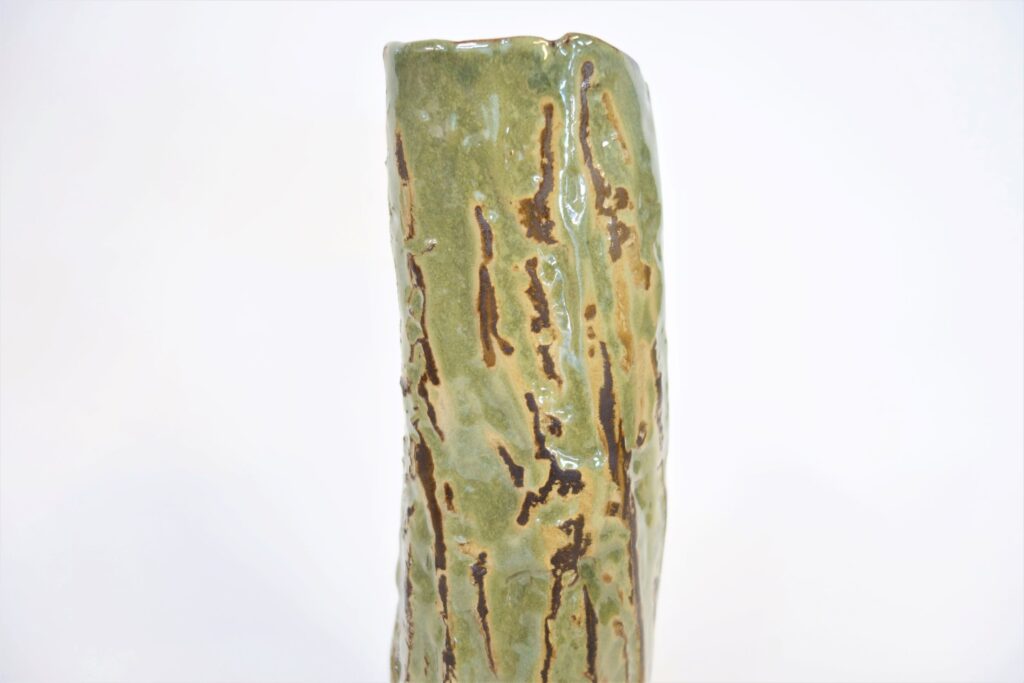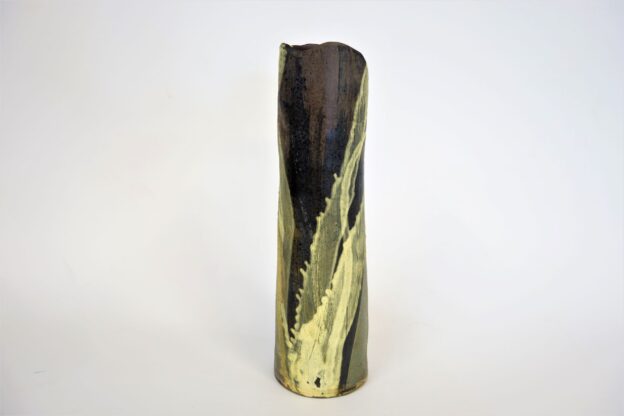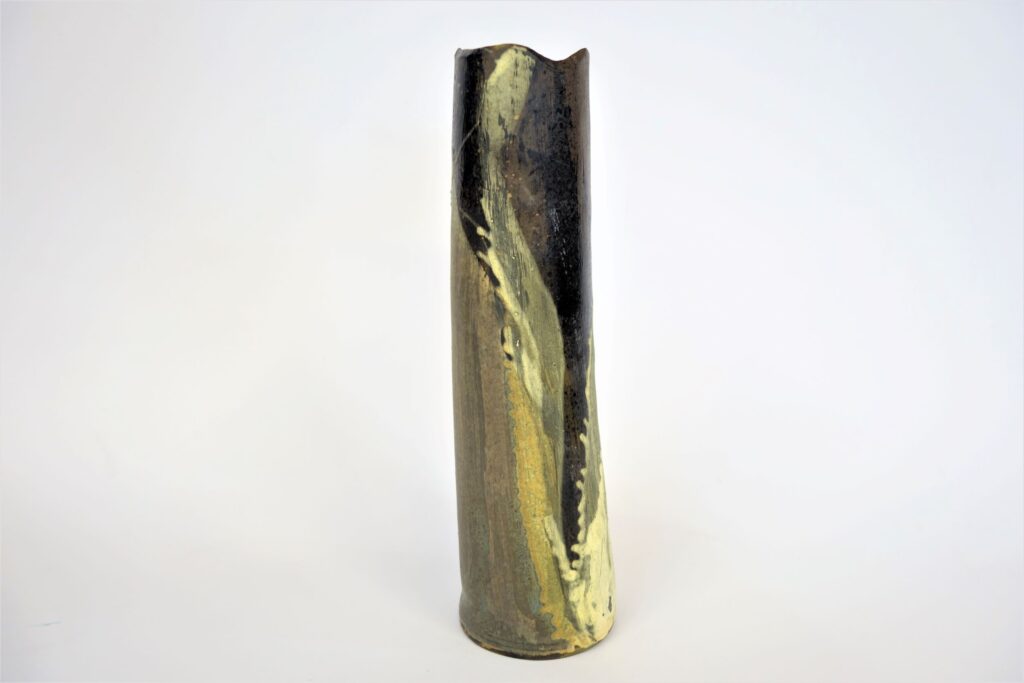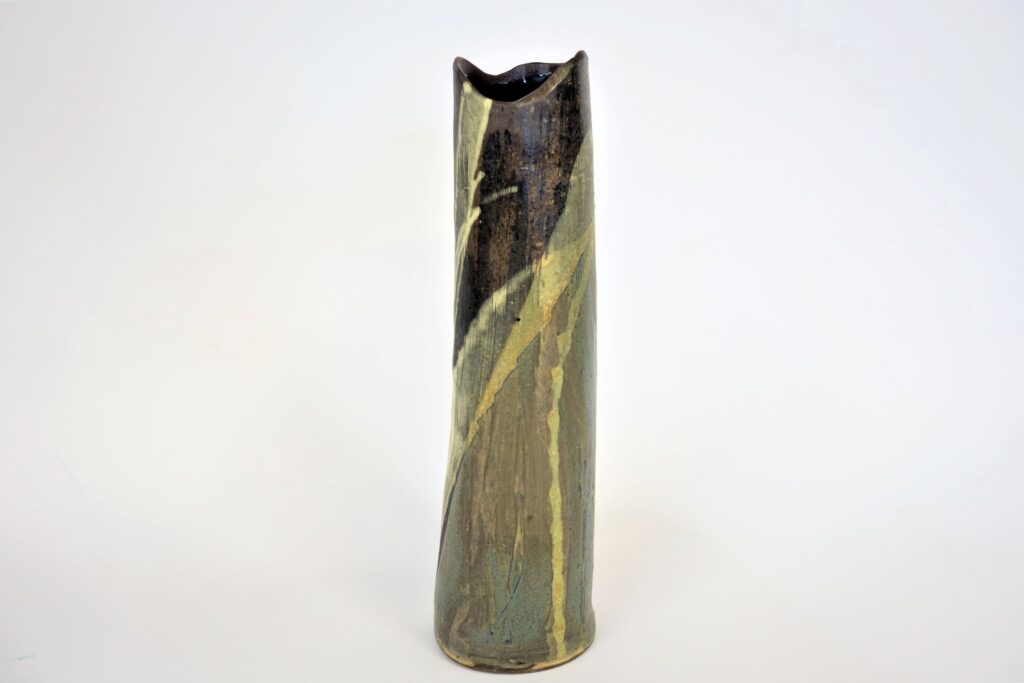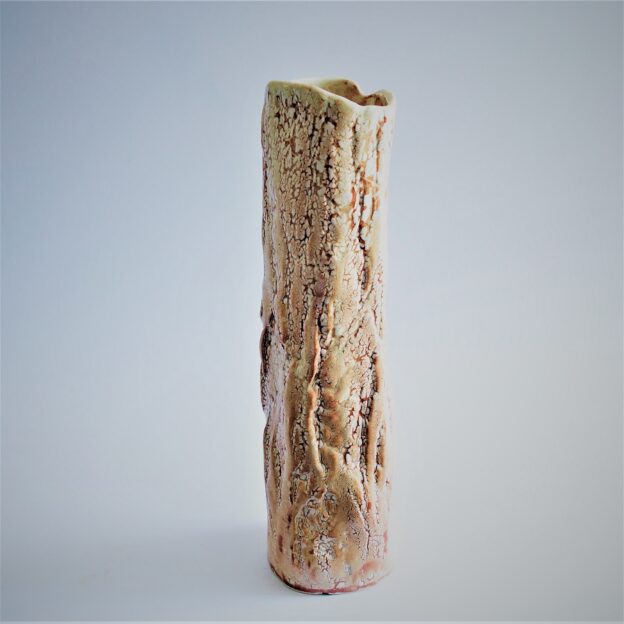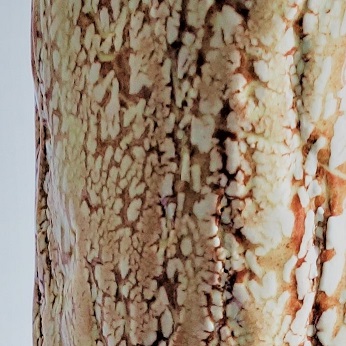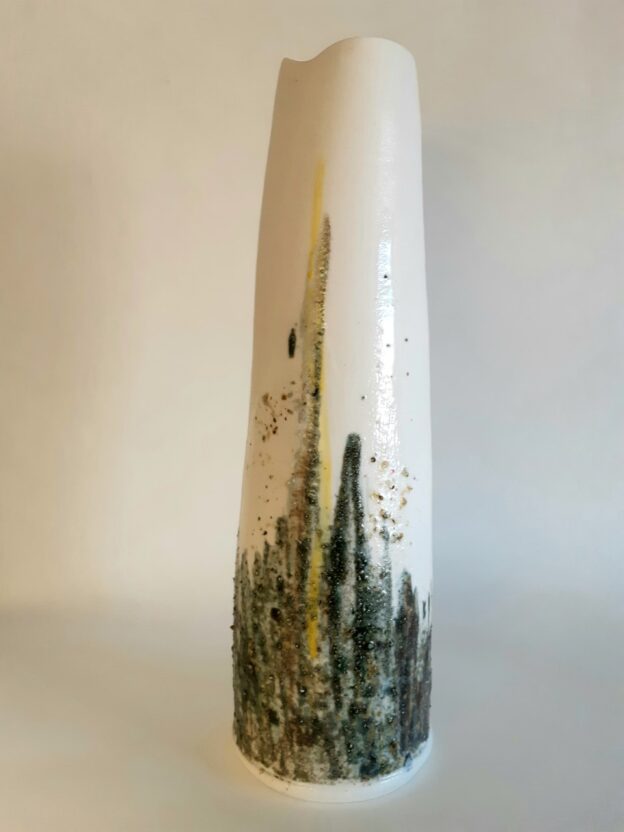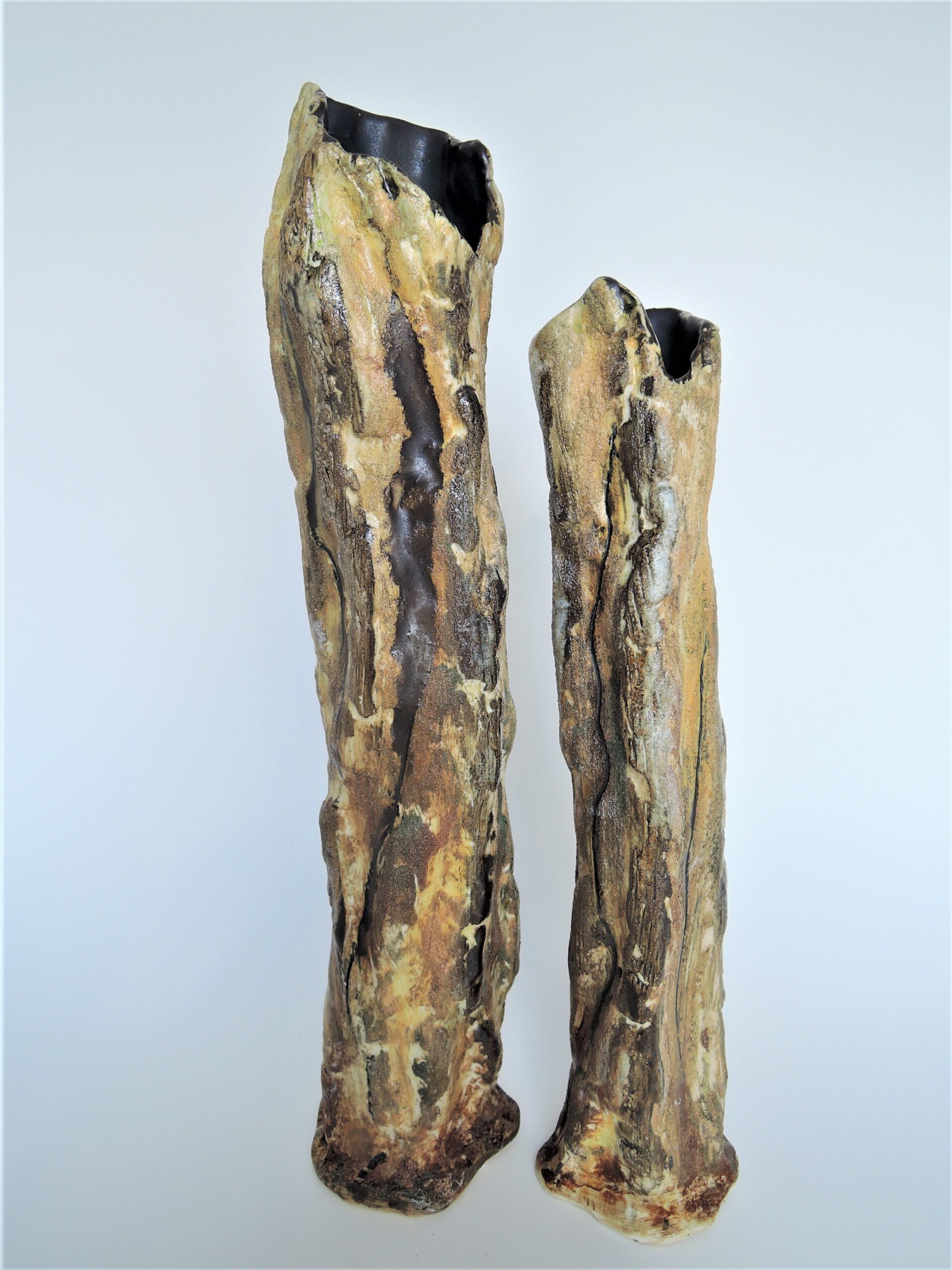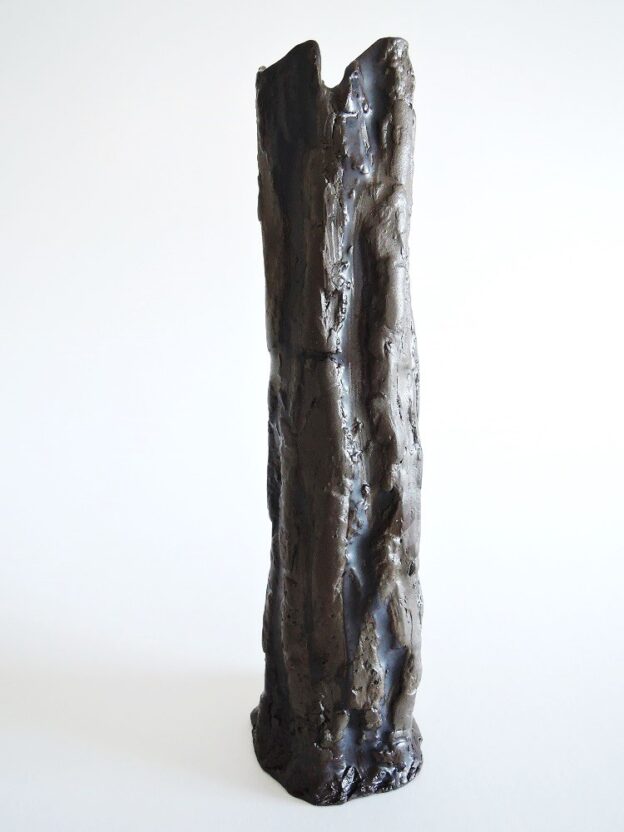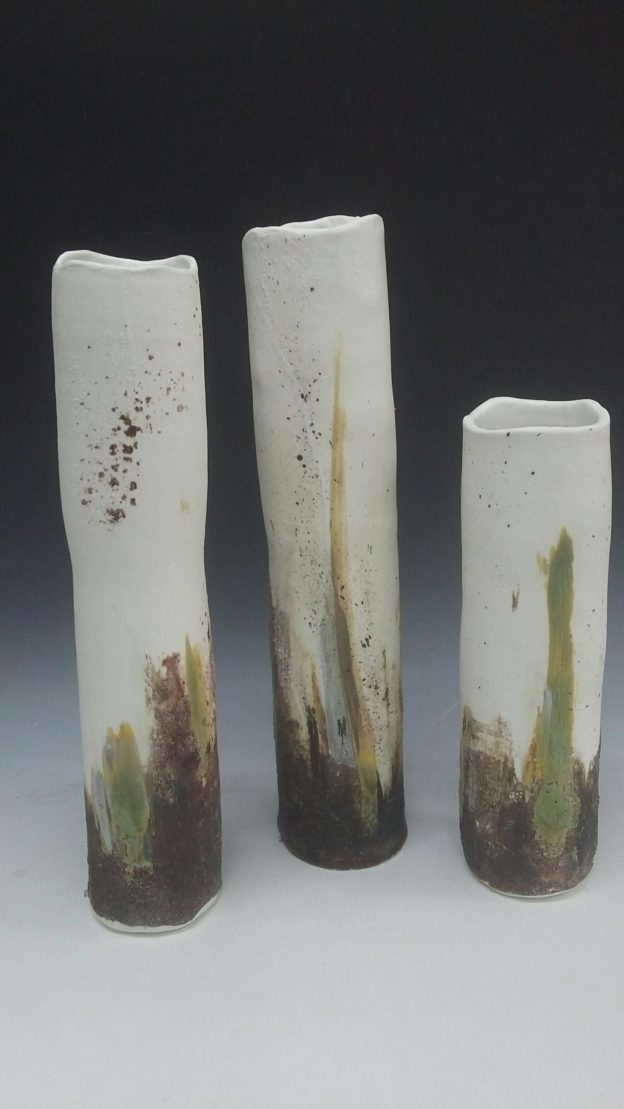Porcelaneous stoneware. Fired to Cone 6, in oxidation. Dimensions
Height:: 33 cm, 33 cm, and 25 cm.
Made during the month I spent at TAFE Northern Beaches (Sydney) – Open Studio – Ceramics.
I must have spent a long time gazing at the ghost gum trees I came across while walking in in the bush along the Sydney coastline, Other trees too, like the strangler figs, were equally stunning, but the ghost gums took my breath away, with their dark, decaying bark peeling away to reveal the naked smooth-white trunk reaching upwards towards the sky: fire and ash, decay, strength, and regrowth.
Nothing came of the project I had initially put forward to Christopher James (who runs the ceramics school there) as justification for being accepted into the Open Studio. But a series of these tree trunk vases/cylinders came out instead, which made me happy.
Two cylinders, thrown; the lower part of the base then coated with a mix of slips, oxides, grit and earth from my walks, to provide texture for the breaking, peeling bark. With the cylinders still damp, I then attached the second cylinder to the first, working on the wheel to fuse them seamlessly together. I added more slips and stains further up the cylinder. Once bisqued, I sprayed a fine layer of clear glaze to the surface, and fired the cylinders to cone 6, in oxidation.
